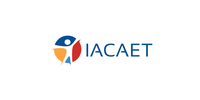Inspirees Dance/Movement Therapy Training Program - Alternative route approved by the American Dance Therapy Association
Movement Observation II
Course B 8
Instructor: Barbara Nordstrom-Loeb MA, MFA, LMFT, BCDMT, CMA, MindellPW Associate, SEP, WoS
Days: October 10/11/17/18/24/25/31, November 1/7/8, 2020; the time is 8:00pm-11:00pm US-Eastern time.
Credit hours: 2 Class room hours: 30
Course has live translation into Chinese
COURSE DESCRIPTION
Description: This course studies systems of movement analysis created and postulated by Rudolph von Laban, Irmgard Bartenieff, and Judith Kestenberg. Using movement sequences, improvisations, and movements taken from patients in clinical settings, students will master basic Laban theory and learn how to apply it in the context of dance/movement therapy. The theory features Body, Effort, Space, and Shape (known hereafter as BESS) as theoretical constructs that can be explored in the studio and applied in the field.
Goal: The primary goal is to understand Laban Movement Analysis in the context of dance/movement therapy. Students will learn to move and see the elements/dynamics described by the theory and to speak and write the language of the theory. They will learn live and video observation techniques to use in leading dance therapy sessions and analyzing such sessions, as well as gathering data for research. They will learn to connect observation to interpretation and symbolic content.
Student Learning Objectives:
1. To gain a deeper understanding of Effort States and Basic Effort Actions and be able to move and observe them in improvisations, diverse dance/movement therapy contexts, and cultures.
2. To gain a deeper understanding of Space Theory and the Diagonal Scale and be able to move and observe such constructs in improvisations, diverse dance/movement therapy contexts, and cultures.
3. To gain a deeper understanding of Shape theory and Modes of Shape Change and be able to move and observe such constructs in diverse dance/movement therapy contexts and cultures.
4. To gain a deeper understanding of the Principles of Bartenieff Fundamentals and apply them in assessing patient posture and movement patterns.
For more information on the course or questions about registration, please email us at education@inspirees.com
